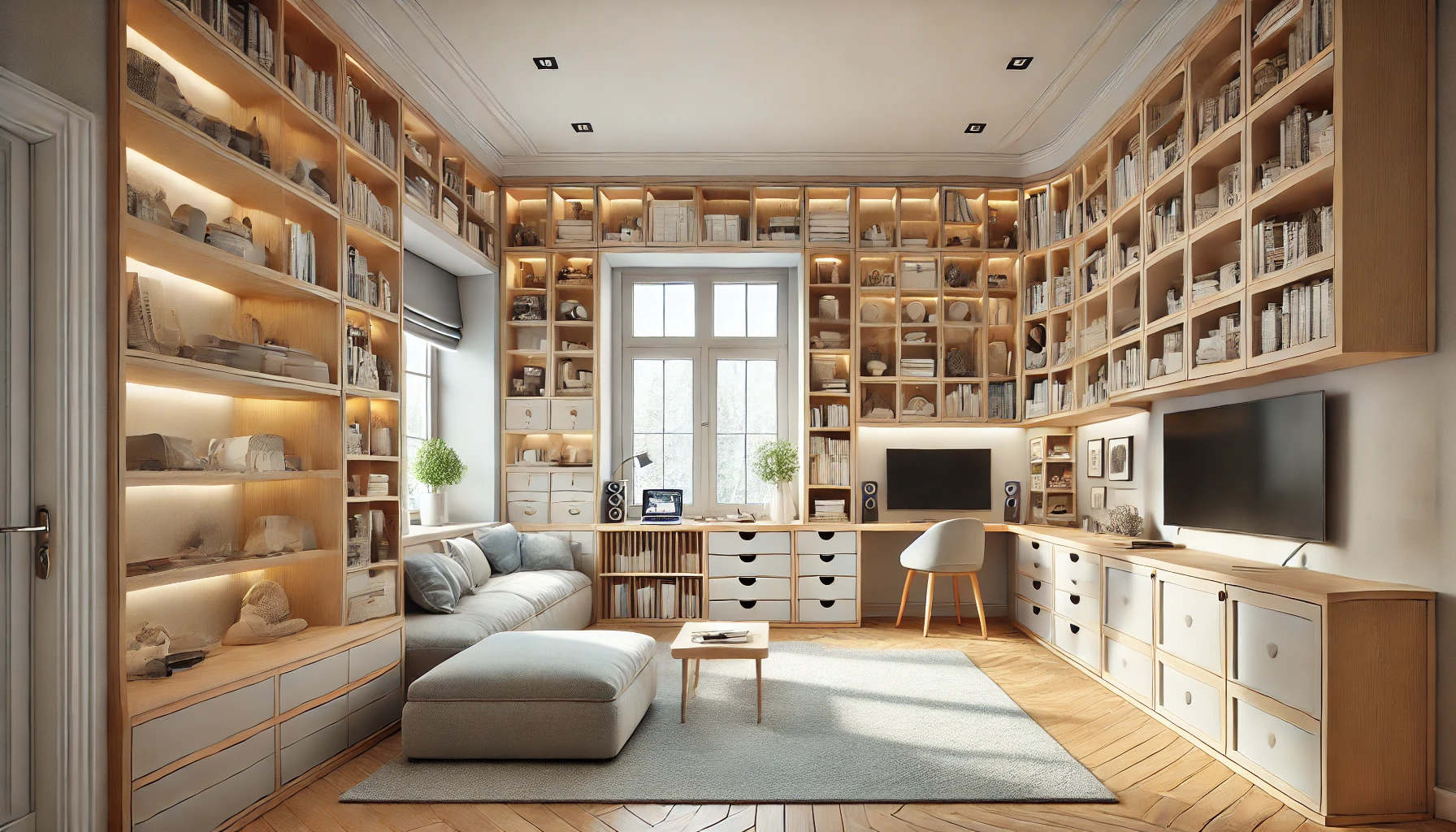Built-in Furniture | Custom Designs, Practical Uses, and Key Benefits
Built-in furniture is an integrated approach to interior design that seamlessly blends furniture with the architectural structure of a space. Unlike freestanding furniture, built-in pieces are designed to fit perfectly within the dimensions and layout of a room, providing a cohesive and streamlined look. This type of furniture can be customized to meet specific needs and preferences, making it a popular choice for both residential and commercial interiors.
In this comprehensive guide, we will explore the various custom designs of built-in furniture, their practical uses, and the key benefits they offer. By understanding these aspects, you can make informed decisions about incorporating built-in furniture into your design projects.

Categories
Related Terms
Custom Designs for Built-in Furniture
1. Built-in Bookshelves
Built-in bookshelves are a classic example of how built-in furniture can enhance both functionality and aesthetics in a room. These shelves are custom-designed to fit the available wall space, providing ample storage for books, decorative items, and other personal belongings.
Design: Built-in bookshelves can be designed to match the room’s architectural style, with options ranging from simple, clean lines to ornate, detailed molding.
Materials: Common materials include wood, MDF, and metal, which can be painted or stained to complement the room’s decor.
Applications: Ideal for living rooms, home offices, libraries, and bedrooms.
2. Built-in Wardrobes
Built-in wardrobes offer a sleek and organized solution for clothing storage. These wardrobes are custom-fitted to the dimensions of a room, maximizing storage space and providing a seamless look.
Design: Options include sliding doors, hinged doors, and open shelving, with various configurations for hanging clothes, shelves, and drawers.
Materials: Typically made from wood, MDF, or laminate, with finishes that range from matte to glossy.
Applications: Perfect for bedrooms, walk-in closets, and dressing rooms.
3. Built-in Desks
Built-in desks are a practical solution for creating a dedicated workspace in a home or office. These desks are designed to fit the specific dimensions of a room, optimizing space and providing a clutter-free environment.
Design: Can include integrated drawers, shelves, and cable management systems, with styles ranging from minimalist to traditional.
Materials: Commonly made from wood, MDF, or metal, with finishes that match the room’s decor.
Applications: Suitable for home offices, study rooms, and commercial office spaces.
4. Built-in Seating
Built-in seating, such as window seats, banquettes, and bench seating, adds functionality and charm to various spaces. These seating options are custom-designed to fit specific areas, providing comfortable and efficient use of space.
Design: Includes cushioned seats, storage compartments, and custom upholstery, with styles that complement the room’s overall design.
Materials: Often made from wood, MDF, or metal, with fabric or leather upholstery.
Applications: Ideal for kitchens, dining areas, living rooms, and entryways.
Practical Uses of Built-in Furniture
1. Maximizing Space
One of the primary practical uses of built-in furniture is maximizing space. By integrating furniture into the architectural structure, built-in pieces utilize every inch of available space, making them ideal for small or irregularly shaped rooms.
2. Enhancing Organization
Built-in furniture helps enhance organization by providing designated storage solutions. Custom designs can include specific compartments for different items, helping to keep spaces tidy and clutter-free.
3. Improving Functionality
Built-in furniture improves functionality by offering tailored solutions that meet specific needs. For example, built-in desks with integrated cable management and storage make home offices more efficient, while built-in wardrobes with custom configurations make clothing storage more accessible.
4. Creating a Cohesive Design
Built-in furniture contributes to a cohesive design by seamlessly blending with the room’s architecture. Custom designs can match the style, color, and materials of the surrounding elements, creating a unified and harmonious look.
Key Benefits of Built-in Furniture
1. Increased Property Value
One of the key benefits of built-in furniture is the potential to increase property value. Well-designed built-in pieces are often viewed as high-quality, custom features that enhance the overall appeal of a home or commercial space.
2. Personalization and Customization
Built-in furniture offers a high level of personalization and customization. Homeowners and designers can work together to create pieces that fit specific needs, preferences, and styles, resulting in unique and tailored solutions.
3. Durability and Longevity
Built-in furniture is typically more durable and long-lasting than freestanding pieces. Constructed to fit specific spaces, these pieces are often made from high-quality materials and are securely anchored to the walls or floors, reducing wear and tear over time.
4. Improved Aesthetics
Built-in furniture enhances the aesthetics of a room by providing a clean, streamlined look. Custom designs can match the architectural style and decor of the space, creating a visually pleasing and cohesive environment.
Conclusion
Built-in furniture is a versatile and practical solution that offers numerous benefits for both residential and commercial interiors. By exploring custom designs, understanding their practical uses, and recognizing the key benefits, you can make informed decisions about incorporating built-in furniture into your design projects. Whether aiming to maximize space, enhance organization, or increase property value, built-in furniture provides a seamless and stylish solution that blends functionality with aesthetics.
